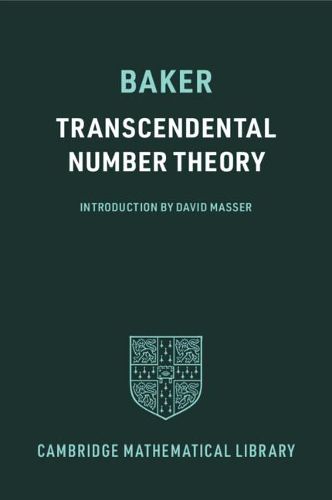Readings Newsletter
Become a Readings Member to make your shopping experience even easier.
Sign in or sign up for free!
You’re not far away from qualifying for FREE standard shipping within Australia
You’ve qualified for FREE standard shipping within Australia
The cart is loading…






First published in 1975, this classic book gives a systematic account of transcendental number theory, that is, the theory of those numbers that cannot be expressed as the roots of algebraic equations having rational coefficients. Their study has developed into a fertile and extensive theory, which continues to see rapid progress today. Expositions are presented of theories relating to linear forms in the logarithms of algebraic numbers, of Schmidt’s generalization of the Thue-Siegel-Roth theorem, of Shidlovsky’s work on Siegel’s E-functions and of Sprindzuk’s solution to the Mahler conjecture. This edition includes an introduction written by David Masser describing Baker’s achievement, surveying the content of each chapter and explaining the main argument of Baker’s method in broad strokes. A new afterword lists recent developments related to Baker’s work.
$9.00 standard shipping within Australia
FREE standard shipping within Australia for orders over $100.00
Express & International shipping calculated at checkout
First published in 1975, this classic book gives a systematic account of transcendental number theory, that is, the theory of those numbers that cannot be expressed as the roots of algebraic equations having rational coefficients. Their study has developed into a fertile and extensive theory, which continues to see rapid progress today. Expositions are presented of theories relating to linear forms in the logarithms of algebraic numbers, of Schmidt’s generalization of the Thue-Siegel-Roth theorem, of Shidlovsky’s work on Siegel’s E-functions and of Sprindzuk’s solution to the Mahler conjecture. This edition includes an introduction written by David Masser describing Baker’s achievement, surveying the content of each chapter and explaining the main argument of Baker’s method in broad strokes. A new afterword lists recent developments related to Baker’s work.